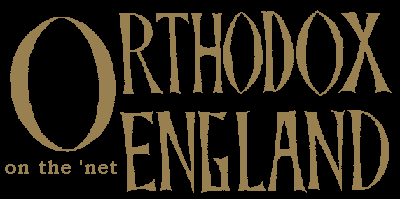
![]()
Excerpt from:
Volume 2 Issue 2 Date 1st December 1998
![]()
Why
do Orthodox priests wear beards, when until recently Catholic priests
were actually forbidden to wear beards? And why did Catholic monks have
tonsures, but not Orthodox? The simple reason why Orthodox priests wear beards is because, as a Nazarene,
Our Lord had a beard, as can be seen from any icon. Since the priest is
a dispenser of sacramental grace and an icon of Christ, he should physically
resemble Our Lord, not only in wearing a robe or cassock (which need not
at all be black, contrary to popular myth), but also in being bearded
and having the same hairstyle (long hair with a parting down the middle).
Sometimes this is not possible, especially if the priest has to do a secular
job (and also if the priest's wife objects to long hair and untrimmed
beard!) However, I have not answered the somewhat more complex second
part of your question. In the Roman Empire it was the custom for men to shave. Not to shave was
to be a 'barbarian', i.e. not be a Roman and therefore be culturally inferior.
This custom of shaving was particularly strong in the Western part of
the Roman Empire, where Rome was. Even in the Eastern part of the Empire
beardless priests were still common up until the fifth century. Here,
however, the sense of the physical appearance of Christ and the need for
clergy to resemble Him dominated and in the East beardless clergy had
disappeared by the eighth century at latest. In the West hermits and monastics also had long hair and beards, like St
Martin of Tours. However, the parish clergy came to a kind of compromise.
Although in order to avoid seeming effeminate, Western Orthodox clergy
did not shave, they nevertheless trimmed their beards quite closely. This
is clear from icons of St Leo the Great or St Gregory the Great. Unfortunately,
this tradition of trimmed beards was lost with the tyranny of Charlemagne
at the end of the eighth century. With his massive 'barbarian' inferiority
complex, it was his desire in all things to imitate pagan classical Rome.
It was therefore under him that Western clergy were ordered to shave regularly.
For example at the Council of Aachen (816), it was stipulated that priests
and monks were to shave every two weeks. Despite this, until the beginning of the eleventh century most hermits
and bishops too were still bearded. Nevertheless, by the end of the eleventh
century most priests and monks shaved regularly, at least ten times a
year, if not much more frequently. In particular, in 1080 Hildebrand,
Pope Gregory VII, tried to enforce shaving. All this was in pure imitation
of the practices of pagan Rome. In the sixteenth century beardlessness
for Roman Catholic clergy was enforced by further canons, which appear
to have been dropped since the Second Vatican Council. (For the best and
perhaps definitive survey of this question, see 'Apologia de Barbis' by
Burchard of Bellevaux edited by R. Huygens with an introduction on 'Beards
in the Middle Ages' by Giles Constable, Brepols, 1983). The third part of your question concerns tonsuring. Perhaps you do not
realise it, but all Orthodox monks are tonsured (as are all Orthodox,
at baptism and chrismation). Today, their tonsure, however, is symbolic.
Until the fifteenth century, it most certainly was not and consisted of
a round tonsure on the crown of the head exactly like the ancient but
not late mediŠval Western one. A glance at any icon of St Gregory Palamas
will confirm this halo-like tonsure. Under the influence of hermits this
actual tonsuring fell out and long hair came in. With monastic influence,
the custom of long hair even for married clergy has become the norm (though
St Paul would not have approved: 'Doth not nature itself teach you, that,
if a man have long hair, it is a shame unto him?' 1 Cor. 11, 14 ). In conclusion it can thus be said that the wearing of beard and long hair
by Orthodox clergy, wherever it is possible, has come from the desire
to physically resemble Christ. It is to be hoped that this physical resemblance
is but a symbol of the spiritual resemblance of Christ's humility, which
is the aim of our life.
A. S., Durham
(c) Orthodox England - Published within the English Deanery of the Church Outside Russia: with the blessing of the Very Reverend Mark, Archbishop of Great Britain and Ireland.